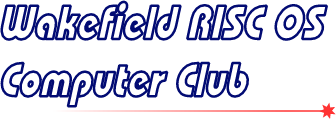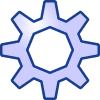Meeting: Impact Database and Tablet Update
John Arthur showed us how he uses the Impact database to enable searching of the newsletter back catalogue CD index, with the ability to open the desired issue and page with a click of the mouse. Following that, Peter Richmond gave a general comparison of iOS (Apple) versus Android tablets. A number of tablets and eBook readers were available at the meeting for members to examine.
Report by John Arthur
The meeting was originally planned to have as its theme the use of the Impact database. After a number of forced personnel changes there were finally two sessions: one by John Arthur as originally intended, dealing with the use of Impact in conjunction with the WROCC Back Catalogue CD (this was extended to fill some of the vacant time) and a second by Peter Richmond adding to the talk on Tablet Computers from February 2013.
Setting up illustrated some of the pitfalls when trying to run a monitor and a projector to show the same display. The ARMini for the first session was set up for 1920 × 1080 at a 40Hz frame rate; the projector’s native resolution is the same, but it likes a higher frame rate. Once the cables were correctly connected via the splitter box and the ARMini had produced a display via the projector, the monitor was added to the mix and successive screen modes were tried until the displays looked the same at 1280 × 720 at 60Hz. Unfortunately this lost the top of the ARMini screen where all the relevant short cuts were located. The missing area on the right-hand side was not a problem as the iconbar scrolling allowed all the icons to be reached.
John opened by mentioning some ‘features’ of his set-up such as the red and yellow mouse cursor which appears on the opposite side of the display if scrolled off (thanks to Mauzer) thus reducing mouse travel, a fading ‘power on’ indicator light, the problem with starting up with Num Lock on when using a keyboard with an embedded numeric keypad, and loss of automatic iconbar moving to the front. He invited listeners to ask questions throughout; this was a good idea as, rather than going through the text and screen shots already prepared, a live run through was attempted, with the usual pitfalls!
The illustrations that were intended to appear, with an outline of the commentary, can be seen in an article to be published next month. While it may be that John knew what he was doing, he failed to carry some (most?) of the audience with him as many didn’t use Impact. Some well directed questions (thank you, Rick) hopefully resulted in some clarification.
The failure during the talk to get the database to find any result for a search for ‘basic’ was explained in the cold light of next day: it was due to not ticking the ‘partial match’ box in the search window (every entry in the search fields had additional text around it). The possible confusion between Rename (suggested for bulk renaming of files) and its anagram application Remane was pointed out from the floor.
The PDF files in Index to permit printing or manual searching of alphabetic General, Software and Author indices were described before dealing with the steps to set up Impact files, install the TaskKill utility and replace the !Run and !RunImage files inside PDF – the PDF file viewer – to enable the PDF file of the relevant Volume/Issue to open at the correct page with a single click from the database card. Time was found for a brief outline of the drill for producing the index PDF files.
As the slot was intended to be approximately an hour there was still time to explain another use of Impact: finding and running installed applications (of the order of 200 to choose from). The progress was from a single text list with live links in StrongED (see Managing Applications in June 2006’s Archive, issue 19.9, page 19) to the application of a more easily searchable database.
The free questioning led to a few diversions from the database theme; to such matters as; combined Obey files not behaving as the individual Obey files, speed of ARMini vs RiscPC, A9home, and Raspberry Pi. A miniature keyboard found useful for presentations, and with the Raspberry Pi, was shown and someone queried what it was (X RII ProMini 2.4GHz Tiny Wireless Keyboard with Built-in TouchPad/Laser Pointer, sold by LaptopMate-UK at £21.99).
In session two Peter Richmond compared the features of the Apple and Android operating systems and had a look at the two Windows 8 variants used on tablets (see the accompanying article on page 3). A number of people had brought along tablets and eBook readers and there was a selection for people to look at after the presentation.







